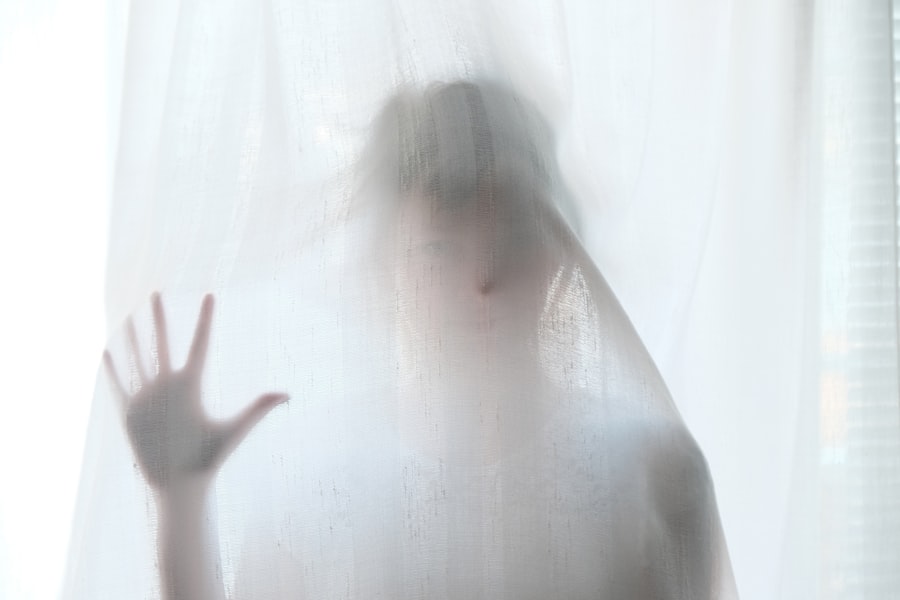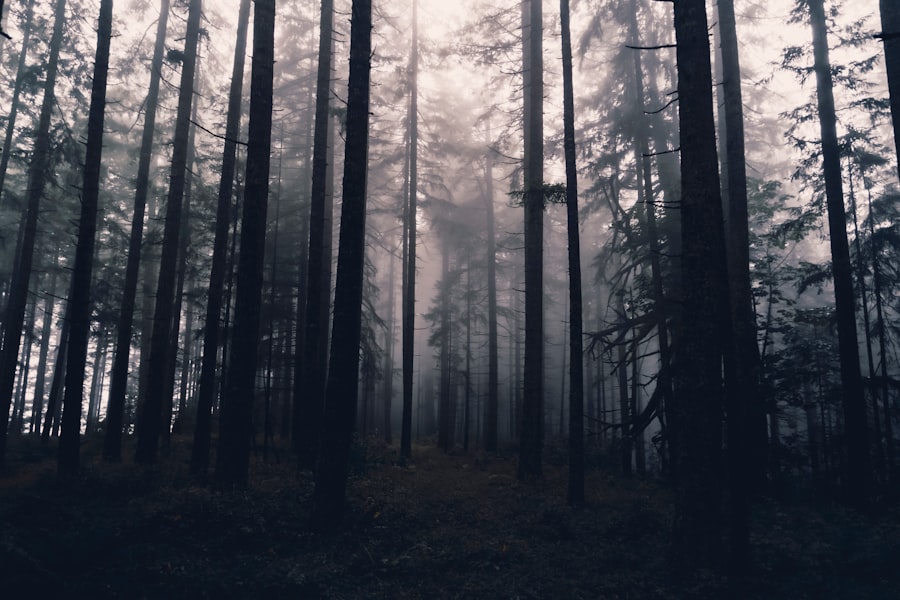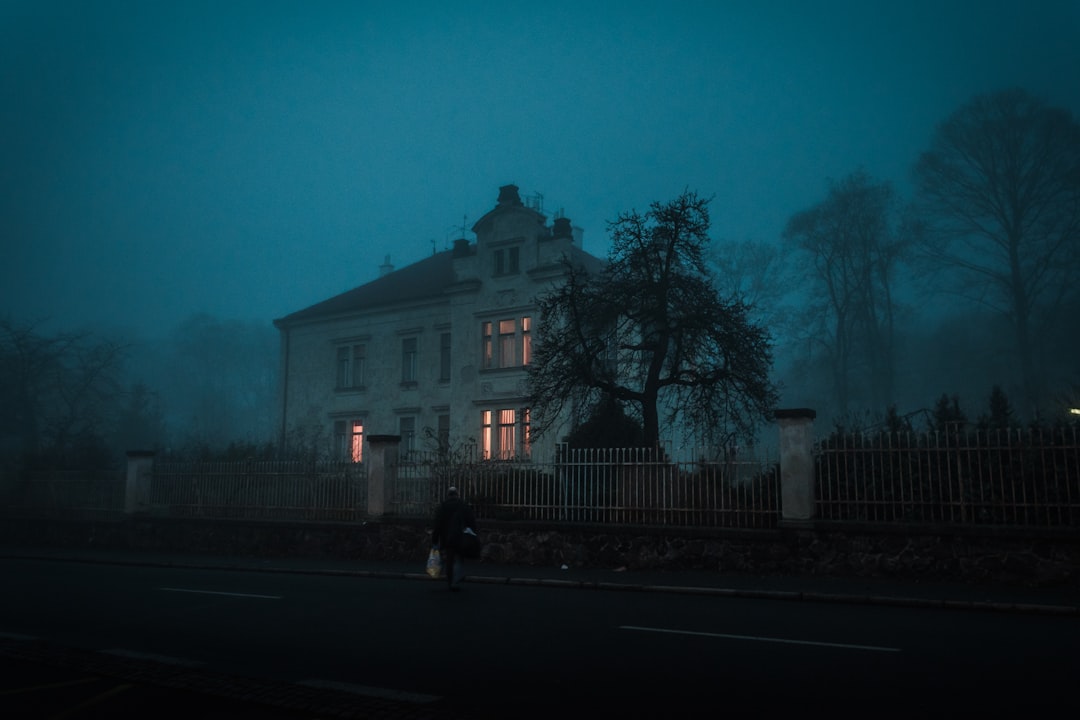Haunted houses have long captivated the human imagination, serving as a source of both fear and fascination. You may find yourself drawn to the stories of eerie apparitions, unexplained noises, and chilling encounters that seem to defy logic. These tales often evoke a sense of mystery and intrigue, prompting you to ponder the existence of spirits and the afterlife.
Whether you are a skeptic or a believer, the allure of haunted houses is undeniable, as they tap into our deepest fears and curiosities about what lies beyond the veil of death. As you delve into the world of haunted houses, you may discover that they are not merely figments of folklore but rather phenomena that have been reported across cultures and centuries. From ancient castles to modern suburban homes, the idea of a dwelling being inhabited by restless spirits has persisted throughout history.
This article will explore the signs that may indicate a house is haunted, the scientific explanations behind these phenomena, and the psychological and environmental factors that contribute to your beliefs about hauntings. By examining these elements, you can gain a deeper understanding of what it means to live in a haunted space.
Key Takeaways
- Haunted houses are often associated with paranormal activity and have been a popular subject in folklore and pop culture.
- Common signs of a haunted house include unexplained noises, cold spots, and objects moving on their own.
- Science plays a role in explaining haunted house phenomena through the study of environmental factors, psychology, and technology.
- Paranormal investigations and research methods involve using tools such as EMF meters and EVP recorders to gather evidence of paranormal activity.
- Psychological explanations for haunted house experiences include suggestibility, fear, and the power of suggestion.
Common Signs of a Haunted House
When you enter a house that is rumored to be haunted, you might notice certain signs that suggest paranormal activity. One of the most common indicators is the presence of unexplained noises, such as footsteps, whispers, or doors creaking open and shut on their own. These sounds can send shivers down your spine, making you question whether you are truly alone in the space.
You may also experience sudden temperature drops or cold spots in specific areas of the house, which are often associated with ghostly presences.
You might find yourself glancing over your shoulder or feeling an inexplicable heaviness in the air.
Objects may also go missing or be found in unusual places, leading you to wonder if unseen forces are at play. These experiences can be unsettling, leaving you with a sense of unease as you navigate your daily life within the walls of your home.
The Role of Science in Explaining Haunted House Phenomena

While tales of haunted houses often lean heavily on the supernatural, science plays a crucial role in demystifying these experiences. As you explore the realm of paranormal activity, you may find that many occurrences can be explained through natural phenomena. For instance, infrasound—sound waves below the range of human hearing—has been linked to feelings of anxiety and unease.
This phenomenon can create sensations that mimic ghostly encounters, leading you to believe that your home is haunted when, in fact, it may simply be a result of environmental factors. Additionally, electromagnetic fields (EMFs) have been studied for their potential effects on human perception. High levels of EMFs can cause feelings of discomfort and even hallucinations in some individuals.
If you suspect your house is haunted, it may be worth investigating whether there are any sources of electromagnetic interference nearby. By applying scientific principles to your experiences, you can gain a clearer understanding of what might be happening in your home.
Paranormal Investigations and Research Methods
| Research Methods | Findings | Conclusion |
|---|---|---|
| Interviews | Witness testimonies | Helps gather initial information |
| Surveys | Public opinions | Provides broader perspective |
| Field Investigations | Physical evidence | Direct observation and data collection |
| Technology | EMF meters, EVP recorders | Aids in capturing paranormal phenomena |
If you are intrigued by the possibility of uncovering the truth behind a haunted house, you might consider engaging in paranormal investigations. These investigations often involve teams equipped with various tools designed to detect supernatural activity. Common instruments include EMF meters, infrared cameras, and digital voice recorders to capture potential evidence of ghostly encounters.
As you participate in such investigations, you may find yourself immersed in a world where science meets the supernatural. During these investigations, researchers often employ specific methodologies to ensure their findings are credible. You might observe that investigators set up controlled environments to minimize external influences and document their experiences meticulously.
By analyzing data collected during these sessions, they aim to distinguish between genuine paranormal activity and natural explanations. This blend of scientific rigor and open-mindedness allows for a more comprehensive understanding of what might be occurring within allegedly haunted spaces.
Psychological Explanations for Haunted House Experiences
Your mind plays a significant role in shaping your perceptions of reality, especially when it comes to experiences in haunted houses. Psychological factors can heavily influence how you interpret strange occurrences within your home. For instance, if you are predisposed to anxiety or have recently experienced trauma, you may be more likely to perceive ordinary events as paranormal activity.
This heightened sensitivity can lead to misinterpretations of sounds or sensations that would otherwise go unnoticed. Moreover, the power of suggestion cannot be underestimated. If you enter a space believing it to be haunted, your expectations can shape your experiences.
You might find yourself more attuned to subtle noises or movements that would typically be dismissed as mundane. This phenomenon is known as confirmation bias; once you believe something is true, you tend to seek out evidence that supports your belief while ignoring contradictory information. Understanding these psychological mechanisms can help you navigate your feelings about hauntings more objectively.
Environmental Factors That Can Contribute to Haunted House Beliefs

The environment surrounding your home can significantly impact your beliefs about hauntings. Factors such as location, architecture, and even weather conditions can create an atmosphere conducive to ghostly encounters. For example, homes situated near graveyards or historical battlefields may carry an air of mystery that heightens your sense of unease.
Additionally, environmental conditions such as humidity and temperature fluctuations can contribute to sensations often associated with hauntings. You might notice that certain areas of your home feel colder or more oppressive than others, leading you to believe that something supernatural is at play.
By examining these environmental factors, you can gain insight into how they shape your perceptions and experiences within your living space.
The Influence of Pop Culture on Perceptions of Haunted Houses
Pop culture has played a significant role in shaping societal perceptions of haunted houses. Movies, television shows, and literature often depict haunted spaces as thrilling yet terrifying environments filled with malevolent spirits. As you consume these narratives, they may influence how you view your own living situation or any reports of paranormal activity around you.
The portrayal of ghosts in popular media often leans toward sensationalism, which can skew your understanding of what it means for a house to be haunted. Moreover, the rise of reality television shows focused on ghost hunting has further popularized the idea of haunted houses as sites for exploration and adventure. You may find yourself captivated by these programs, which often dramatize encounters with spirits for entertainment value.
This portrayal can create unrealistic expectations about what it means to experience a haunting and may lead you to interpret ordinary occurrences as something more sinister than they truly are.
How Technology Can Create Illusions of Hauntings
In today’s digital age, technology has advanced to a point where it can create illusions that mimic paranormal activity. You might encounter videos or images online that claim to capture ghostly apparitions or unexplained phenomena; however, many of these instances can be attributed to digital manipulation or camera glitches. As technology continues to evolve, so too do the methods used to create convincing illusions that blur the line between reality and fiction.
Furthermore, social media platforms allow for rapid dissemination of purported evidence of hauntings, which can perpetuate myths and misconceptions about paranormal activity. You may find yourself questioning the authenticity of what you see online as stories spread like wildfire across various channels. By remaining critical and discerning when consuming such content, you can better navigate the complex landscape of technology’s influence on perceptions of hauntings.
Case Studies of Alleged Hauntings and Their Scientific Explanations
Throughout history, numerous case studies have emerged detailing alleged hauntings across various locations. As you explore these accounts, you’ll find that many have been subjected to scientific scrutiny in an attempt to uncover rational explanations for reported phenomena. For instance, one famous case involved the Enfield Poltergeist in England during the late 1970s; investigators found evidence suggesting that much of the activity could be attributed to natural causes rather than supernatural forces.
In another instance, researchers examined reports from the infamous Amityville Horror case and discovered inconsistencies in witness testimonies and physical evidence. By applying scientific methods to these investigations, they were able to debunk many claims while highlighting how psychological factors could influence perceptions of haunting experiences. These case studies serve as reminders that while some individuals may genuinely believe they are encountering spirits, there are often logical explanations waiting to be uncovered.
Debunking Myths About Haunted Houses
As you navigate the world of haunted houses, it’s essential to debunk common myths that perpetuate misunderstandings about paranormal activity. One prevalent myth is that all haunted houses are inherently dangerous or malevolent; however, many reported hauntings involve benign spirits simply seeking recognition or closure rather than causing harm. Understanding this nuance can help alleviate fears associated with living in a supposedly haunted space.
Another myth worth addressing is the belief that only older homes can be haunted; in reality, any dwelling—regardless of age—can harbor spirits or unexplained phenomena. Newer constructions may carry their own histories or energies that contribute to feelings of unease among residents. By challenging these misconceptions surrounding hauntings, you can approach your experiences with a more open mind and a willingness to explore various possibilities.
Tips for Determining Whether Your House Is Haunted or Not
If you’re concerned that your home may be haunted, there are several steps you can take to assess the situation objectively. First and foremost, keep a detailed journal documenting any unusual occurrences or sensations you experience over time; this will help identify patterns or triggers associated with specific events. Additionally, consider discussing your experiences with friends or family members who may have witnessed similar phenomena—gaining multiple perspectives can provide valuable insights into what might be happening within your home.
You might also want to conduct a thorough investigation into the history of your house; researching previous owners or significant events associated with the property could shed light on any lingering energies present in the space. Finally, if you’re still uncertain about whether your house is truly haunted after conducting your research and observations, consider reaching out to professionals who specialize in paranormal investigations for further assistance. By following these tips and remaining open-minded throughout your exploration process, you’ll be better equipped to determine whether your home is indeed haunted or if there are more rational explanations for what you’ve experienced within its walls.
If you’re intrigued by the question “Is my house haunted or is it science?” you might find the article on Freaky Science particularly enlightening. It delves into the scientific explanations behind phenomena often attributed to hauntings, such as electromagnetic fields and infrasound. For a deeper understanding of how science can demystify these eerie occurrences, check out this related article on Freaky Science by visiting Freaky Science. This resource provides a fascinating exploration of how our perceptions can be influenced by environmental factors, offering a rational perspective on seemingly supernatural events.
WATCH THIS! 🧠 The Brain Hack That Makes You See Ghosts!
FAQs
What are some common signs that a house may be haunted?
Some common signs that a house may be haunted include unexplained noises, strange odors, objects moving on their own, and feelings of being watched or touched.
What are some scientific explanations for these supposed haunted occurrences?
Scientific explanations for supposed haunted occurrences include natural phenomena such as drafts causing noises, faulty wiring causing electrical disturbances, and psychological factors such as suggestibility and the power of suggestion.
What are some steps to take to determine if a house is actually haunted or if there are scientific explanations for the occurrences?
Some steps to take to determine if a house is actually haunted or if there are scientific explanations for the occurrences include conducting a thorough investigation of the property, ruling out any natural or man-made causes for the phenomena, and seeking the help of professionals such as electricians, plumbers, and psychologists.
What are some resources for further information on this topic?
Some resources for further information on this topic include books on paranormal investigations, websites dedicated to debunking haunted house myths, and scientific studies on the psychology of belief in the supernatural.
